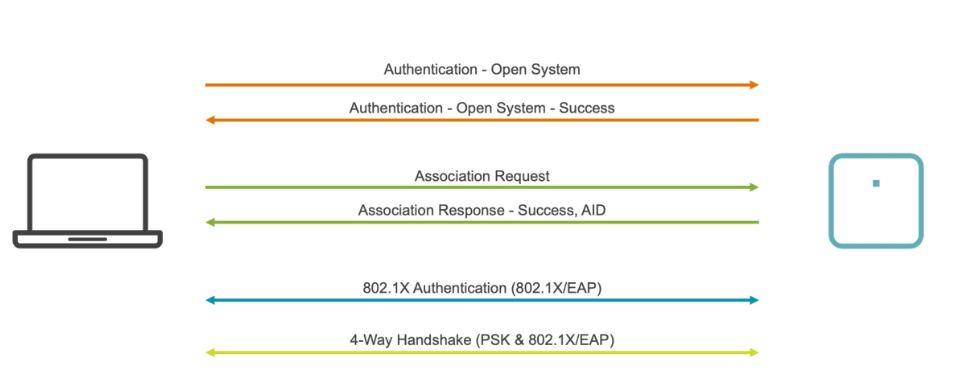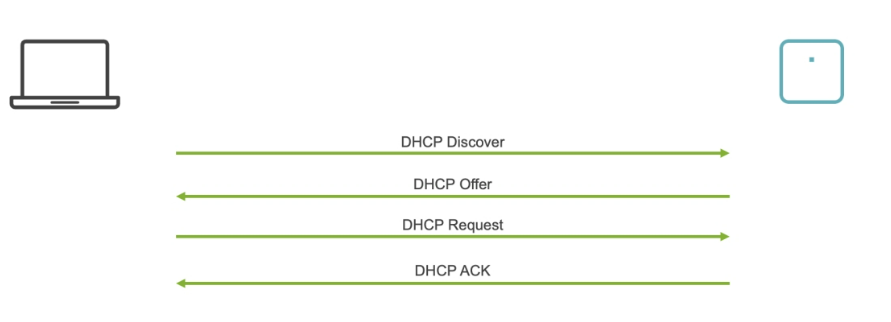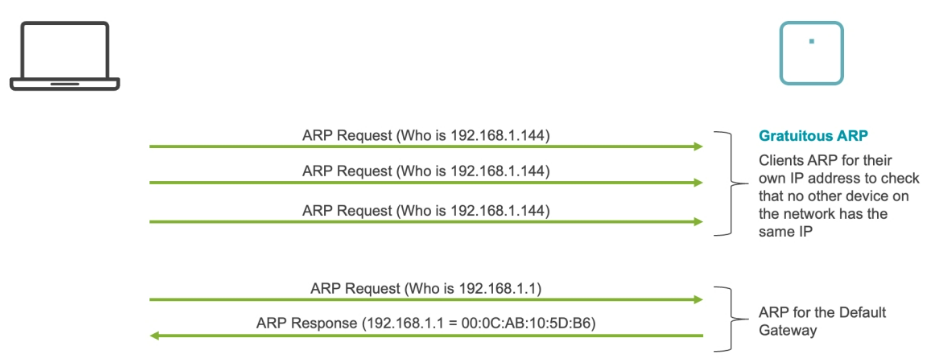EMAIL SUPPORT
dclessons@dclessons.comLOCATION
USClient Association to WIFI
Client Association
Once a client discovers APs, it attempts to associate with one of them. First, the client performs 802.11 Authentication (typically Open System Authentication).
Following this, the client sends an association request. The AP sends an association response if the client meets all the required criteria. The association response contains an association ID (AID), a unique ID for a client for the time it’s associated with the AP. After association, the client and AP take any additional authentication measures, such as 802.1X or PSKs.

Dynamic Host Configuration Protocol—DORA
Every client device requires an IP address. Dynamic Host Configuration Protocol (DHCP) enables a DHCP server to assign IP addresses to client devices. The four steps of the DHCP handshake are discover, offer, request, and acknowledge (DORA). If a client already has an assigned address, it will often request the same address, bypassing the discover and offer steps.

ARP
After an IP address is assigned to a client using DHCP, the client sends an Address Resolution Protocol (ARP) request for the IP assigned to ensure that the IP address is not already in use. This is known as gratuitous ARP

DNS
The Domain Name System (DNS) is used to translate domain names into IP addresses.

Roaming
When there are multiple APs available on the same network, a client can associate with a different AP. The 802.11 standard defines the protocol for roaming; however, the decision of when to roam to a new AP depends on the client implementation of the roaming algorithm.





LEAVE A COMMENT
Please login here to comment.